Barry’s Blog
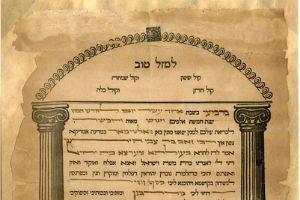
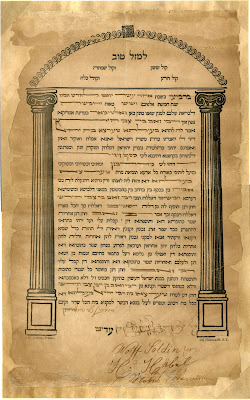
Contained within the Jewish Museum of Maryland collections (JMM gift 2000.110) is this unique 1845 Jewish marriage contract known as a ketubah. It is printed in Hebrew letters using the classic Aramaic language and form prescribed for such a legal document.
It is this type of document that a Jewish husband presents to his wife during their wedding ceremony and details the husband’s obligations in their marriage.
How Close was your Answer?
A careful examination of this image reveals that the document is a pre-printed form, produced in bulk, on inexpensive paper, to be used by the purchaser to fill in the appropriate blanks and spaces with the date, place and names of the participants in the wedding. The meticulous conservation and restoration techniques required to keep this document from further deterioration can be noted by examining where the frayed and torn edges of the original document meet the conservator’s skills.
Even though it is a formal legal document it draws our attention, probably because the text is printed and centered under and within what appears to be a stylized huppa, a Jewish wedding canopy supported by two Corinthian columns.
The acquisition of this 13.75” x 8.5” ketubah and its restoration was made possible through a generous gift of the children of Dr. Leonard and Betty Golombek in honor of their 50th wedding Anniversary and at the JMM we proudly refer to it as the Golombek Ketubah.
So you ask, “What’s the big Deal?”
Why is this document’s acquisition and preservation important to the JMM?
The image below presents a Hebrew-Aramaic transliteration of the Golombek Ketubah text. This rendition was kindly provided by Rabbi Gershon Grayman, and any errors or omissions are strictly those of this blogger. (Click the image for a larger view!)
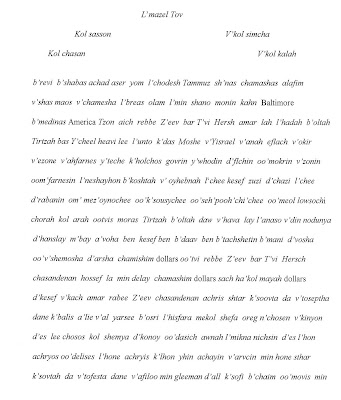
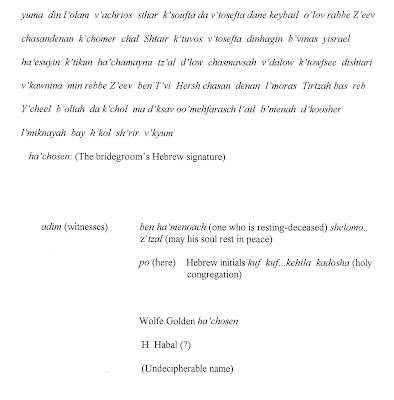
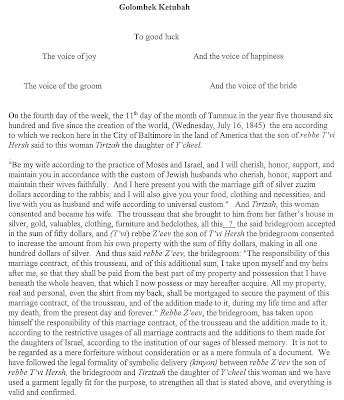
This document possibly presents us with a record of the first marriage ever to occur in the Baltimore Hebrew Congregation’s Historic Lloyd Street Synagogue.
There is much more fascinating material contained within the JMM’s, Golombek Ketubah. I hope that you also like playing historical detective and will share any thoughts or insights you can glean from this document.
Please watch for Barry’s Blog in October 2010 when we will continue with our exploration of the JMM’s historic Golombek Ketubah.*
Wishing everyone a shana tova, Healthy and Happy, 5771.
~Dr. Barry S. Lever, Special Project Consultant
* Dr. Lever, wishes to thank fellow researcher, Ephraim Harel, Rabbi Gershon Grayman and Dr. Moshe Shualy for their help during this fascinating and serendipitous journey of discovery to better understand the history of the Golombek Ketubah.
